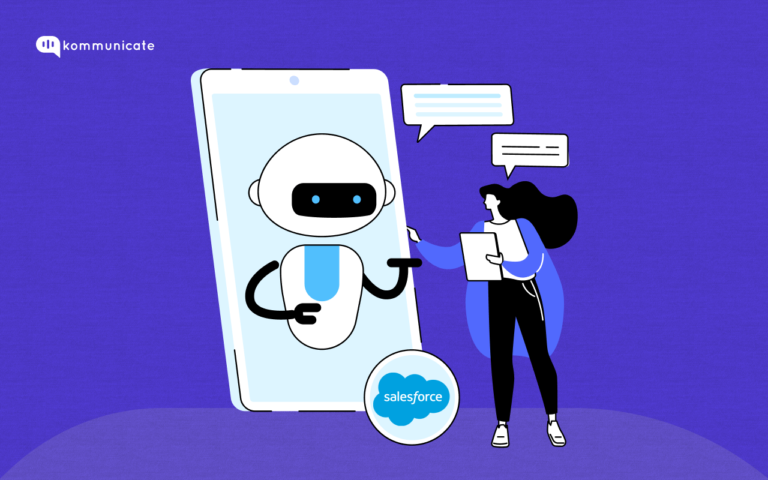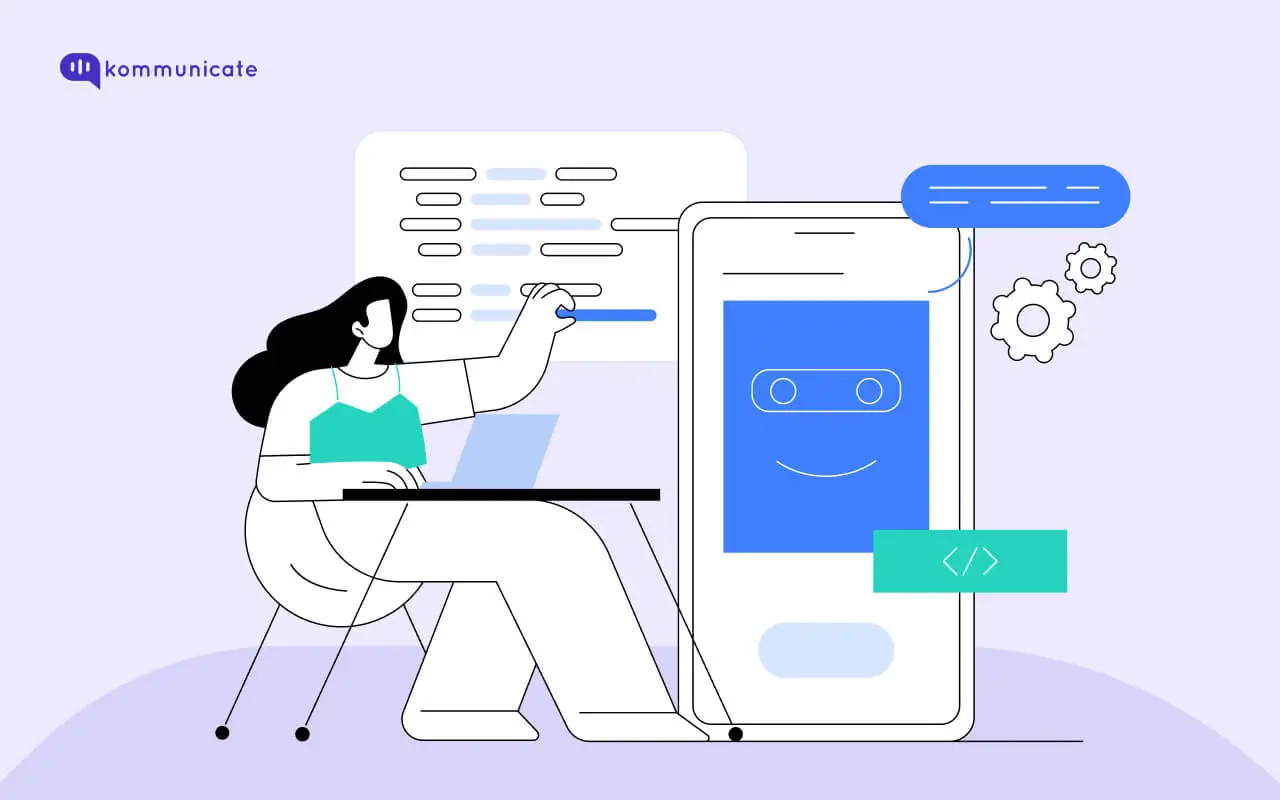Updated on May 30, 2024
What is Conversational AI?
Conversation AI refers to technologies that enable computers to simulate and engage in human-like conversations. These systems use Natural Language Processing (NLP) and Machine Learning to understand, respond to, and learn from interactions with users. It has primarily taken the form of chatbots, voice assistants or IVRS (Interactive Voice Recognition Systems) that can understand and respond to human language in a natural and intuitive manner.
Ever used Amazon Alexa to know what time of the day it is or asked Apple’s Siri for directions? Then you have used Conversational AI, and these platforms are just scratching the surface of what the technology is capable of.
The technology behind Conversational AI is something called reinforcement learning, where the bot need not have a script to read off a response from. Traditional chatbots need to have scripts written by human agents behind the scenes, and they are told specifically what to do as a response to specific keywords. A conversational AI chatbot on the other hand progressively learns from the past interactions to improve its responses and better understand user intents over time.
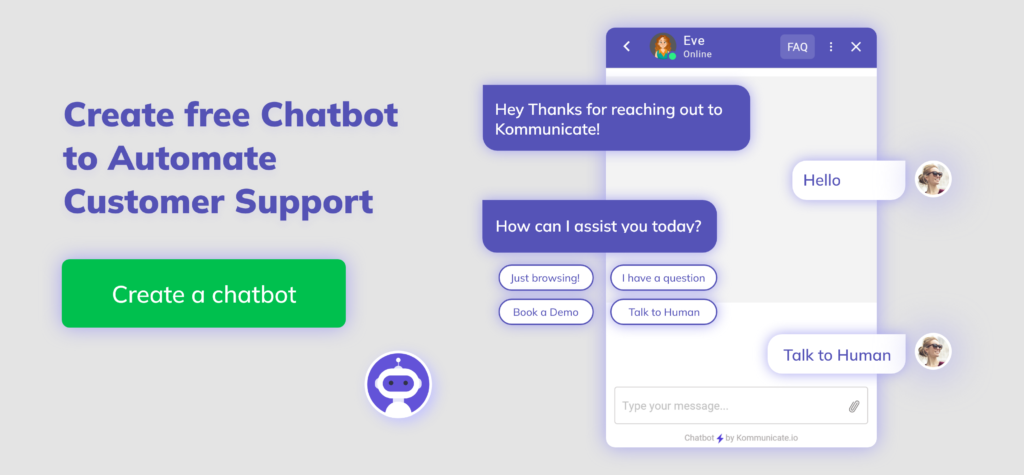
Imagine a Chatbot who can play the customer support executive as naturally as a human can. It can understand our intent. Go through the multiple layers of a question. And give personalized solutions in a language we understand.
That is the perfect example of high-level conversational AI!
How does Conversational AI work?
Simply put, conversational AI allows computers to process text or voice into a language they understand. The machines then are able to understand the user inputs and respond to them aptly.
There are 4 major components of a smart conversational AI –
- NLP (Natural Language Processing) – NLP equips AI systems to comprehend and generate human language, enabling them to understand text and speech inputs.
- NLU (Natural Language Understanding) – It involves extracting entities, identifying intents, and resolving ambiguities in language, improving the accuracy and effectiveness of conversational AI systems.
- Machine Learning – Machine Learning is the core element that powers conversational AI to improve its performance over time by learning from data and user interactions. Through algorithms and models, machine learning enables AI systems to tailor interactions based on user needs and preferences.
- Speech Recognition – Speech Recognition enables conversational AI to transcribe spoken language into text, facilitating voice-based interactions.
All these features work in a constant loop to understand, analyze, and respond to humans. Additionally, machine learning helps computers remember new words, phrases, contexts so that they continue building their database. And get better at responding in a more personalized manner.
The whole purpose of developing it is to give users the same kind of conversation experience with machines as they have with real humans.
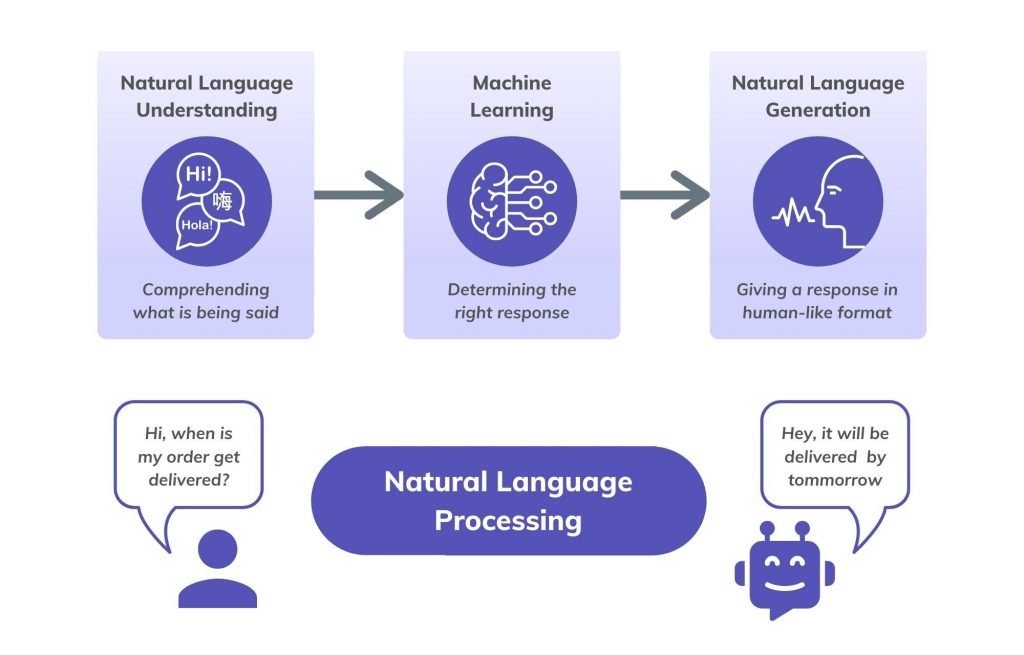
Why is Conversational AI Important?
Conversational AI gives greater insight into the habits of the customer, which in turn, helps speed up the responses of the chatbot. As customer queries get more and more complex, it is Conversational AI that helps companies deal with a wide array of customers.
But this raises the issue of whether conversational AI is that significant. According to the numbers:-
- More than 2.5 billion individuals use messaging services, and there are around a dozen main platforms that cater to different geographic and demographic groups.
- Messaging applications make up five of the top ten most popular apps of all time, and 75% of smartphone users use at least one chat app.
- Voice assistant systems such as Siri, Alexa, and Google Assistant are becoming increasingly popular. Almost 47% of individuals worldwide are more interested in adopting these technologies in their day-to-day activities.
- Companies are routinely recruiting more AI employees to improve the consumer experience of AI technology. Big tech giants such as Microsoft, Google, Amazon, and Apple are working hard to democratize powerful artificial intelligence so that businesses can use it to create increasingly complicated experiences.
Conversational experiences will play a significant part in producing these one-to-one encounters and using the information they give, providing companies with an edge regardless of their core product in a world where mass marketing is progressively giving way to one-to-one brand creation.
What are the Use Cases of Conversational AI?
Conversational AI today is being used in a wide range of applications across various industries. From product recommendation to order processing to marketing to employee engagement, conversational AI is transforming conversational AI is transforming how businesses operate and interact with their customers.
Let’s look at some of the most prominent use cases –
- Lead generation: Companies currently use a chatbot to connect with potential consumers browsing their products and services on their websites.
- Product promotion: Chatbots may communicate with potential consumers, presenting the offer, answering commonly asked questions, and even closing the deal. All of this is done automatically and to as many clients as your website has at the moment.
- Launch of new products: Introducing new items to your clients may be done with the aid of a chatbot, much like promotions. The chatbot will be ready to greet potential customers and advertise your new product or service at all times. In this manner, no matter what time of day or night it is, all of your clients will be informed about your new items and given precise and consistent information.
- Assisting in making purchases: To improve the overall purchase process, chatbots answer questions and recommend items or services to all consumers. They provide a sense of companionship to your consumers, display photographs and videos from your inventory, and complete the buying process.
- Nurturing the leads: Chatbots let clients learn more about your products and services by communicating with them at various sales funnel phases. Promptly, the chatbot will offer each consumer the information they require.
- Faster customer query redressal: Chatbots can answer your clients’ most common queries 24 hours a day, 7 days a week. Thanks to chatbots, customer support personnel will be able to focus their attention on claims that require human-to-human interaction.
- Making appointments: If your company wants to schedule appointments or make bookings. Using a chatbot to automate the act of arranging appointments will streamline important operations in your firm.
- Product recommendations: A chatbot’s capacity to retrieve data from databases is one of its most significant characteristics. The consumer will be able to locate items faster and more efficiently thanks to the usage of a chatbot in customer service. A chatbot will also be able to suggest other related goods to enhance the user experience.
- Order follow-up: Chatbots streamline the purchase confirmation process and keep customers updated on the status of their orders. Rather than speaking with one of your representatives, your client will opt to write to the chatbot for this information.
- Evaluation of customer satisfaction: Another scenario in which your consumers would rather deal with a chatbot than a human representative is when they are asked to rate their level of pleasure. A chatbot can provide you with more precise replies.
Let’s understand the impact of conversational AI by looking at one such tool SmartAction –
SmartAction is a conversational AI tool that allows for intelligent appointment booking, using a combination of voice and text. Missed appointment dates are a thing of the past with this super intelligent conversational AI tool. SmartAction understands that booking an appointment is not as straightforward as it sounds and involves a continuous back and forth between both the parties, before they come to a mutually agreed date and time.
The natural language capabilities of SmartAction are top notch, thanks to a vast database of scheduling-related data. Think of just about any type of scheduling-related task and SmartAction can take care of it for you. From hair saloons to car repair shops, appointment scheduling is present just about anywhere, and with a conversational AI tool such as a SmartAction, you can rest assured that all the customers to your website will leave with a superior customer experience.
What is the Difference between Conversational AI and a Chatbot?
Usually, chatbots are these basic software programs that answer people’s questions through a chat-based interface. Websites install them with predesigned questions & answers flow to navigate visitors to the desired action.
Whereas, conversational AI is more context-based. It is designed to give users a conversational experience with computers. Like how you would have with another human! They use various artificial intelligence technologies to make computers talk with us in a smarter and more natural way.
The most basic difference between the two is that Conversational AI is AI-based and chatbots are rule-based.
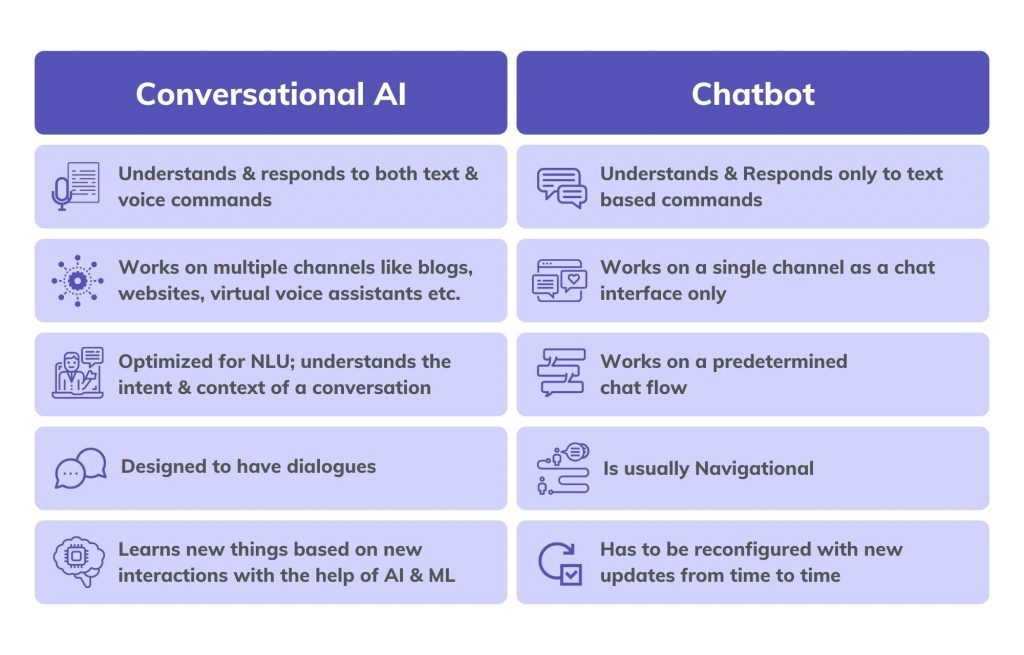
Benefits of Using Conversational AI Tools
A conversational AI platform may help everyone from small to medium businesses to giant corporations. The following are some of the most important advantages of employing conversational AI tools:
- Rapid responses: Customers today want everything at the click of a button and are impatient, and Conversational AI ensures that your business is quick to respond to these customers.
Giving customers quick responses is a great way to ensure that customers get a delightful experience as they are using your product.
- Scalability: Too many customer queries at the same time can throw any support agent off the rails. This is where conversational AI can step in. Conversational AI enables businesses to interact with multiple customers at the same time without compromising on the quality of the conversation.
You can get the same work done with one chatbot as you can with multiple support agents, and this can lead to significant cost savings.
- Efficient responses: Conversational AI, specifically chatbots, can help automate repetitive tasks. This will help improve overall efficiency. Conversational AI tools can quickly retrieve information, answer FAQs, and perform various repetitive tasks. This helps boost overall productivity.
- User insights and analytics: With conversational AI, you get access to a trove of customer data, based on user interactions and their pain points. Identifying this data, and then disseminating it helps businesses make informed decisions. This will ultimately lead to a better customer experience.
- Training : Through useful hints and probing queries, conversational AI may potentially teach people. Customer service representatives frequently provide lessons to their clients. These courses can use conversational AI to automatically use a client’s profile data to guarantee that clients receive individualized assistance.
- Multilingual Support: Language boundaries are no longer an issue thanks to conversational AI. Language translation software is included with most chatbots and virtual assistants. This enables them to identify, understand, and produce practically any language efficiently. Consequently, linguistic issues no longer hold up any customer service engagement. It makes your company more inviting and accessible to many clients.
- 24*7 Availability: Conversational AI overcomes the challenge of availability 24 hours a day, seven days a week. If a consumer needs assistance outside of typical business hours, a chatbot can assist them. It addresses a logistical issue and demonstrates how chatbots may save time, but there’s more to it.
How to Build Conversational AI?
Building your own Conversational AI chatbot is not a tedious process as thought to be. Here are the steps involved in building your own chatbot:
- Find the purpose of your chatbot – Determine the primary function your chatbot will serve, such as customer support, sales assistance, or information dissemination. Clearly defining the purpose helps guide the development process and ensures the chatbot meets specific business needs.
- Decide where you want your chatbot to appear – Choose the platform or channels where your chatbot will interact with users, such as a website, mobile app, social media, or messaging apps. This decision should be based on where your target audience is most active and likely to engage.
- Choose how you want to build your bot (using frameworks or using a platform) – Decide whether to build your chatbot using development frameworks for more customization or utilize chatbot platforms for a quicker, user-friendly setup. Frameworks offer greater flexibility, while platforms often provide easier integration and management.
- Design chatbot conversation – Create a conversation flow that covers various user intents, ensuring the interactions are natural and intuitive. Focus on user experience, incorporating elements like greeting messages, response templates, and fallback options for unrecognized inputs.
- Test if your bot is working as per the plan – Do thorough testing to ensure your chatbot functions correctly and handles conversations as intended. This involves checking for bugs, validating responses, and simulating different user scenarios to identify any issues.
- Train your bot to talk like a human – Continuously train your chatbot using real conversation data to enhance its natural language understanding and response accuracy.
- Monitor how your chatbot is performing – Regularly analyze your chatbot’s performance using metrics such as user engagement, response accuracy, and satisfaction rates. Use this data to make informed improvements, ensuring the chatbot continues to meet user expectations and business goals.
You can create a conversational AI chatbot quickly using Kommunicate’s no code platform. We have listed all these steps in detail in our blog post here.
Types of Conversational AI Tools
- Chatbots – Chatbots may be found on websites, Facebook Messenger, iMessage, display advertising, and possibly additional channels in the future. They’re responding to more than simply support inquiries in most of these cases; they’re helping users to discover things they like and want to buy. This isn’t the only solution to the plethora of options available to today’s customers, but it’s one of the better ones since it allows individuals to converse and think things through with the assistance of a professional assistant.
- Voice Assistants – Voice assistants, are similar to chatbots, but because individuals must speak out to connect with them, the industry has evolved to include several non-transactional tasks. The important thing to remember is that while companies can profit from using voice assistants, they won’t be able to generate full-funnel engagement on their own. Although voice-based conversational AI has experienced little acceptance for transactions, it does provide a compelling entry point for customers to begin product searches, ask contemplation questions, and layout in their minds the features of certain goods they’re interested in.
- Mobile Assistants – Mobile assistants such as Siri, Google Now, and others, like Home Voice Assistants such as Amazon Alexa, Google Home, and Apple HomePod, can work similarly for brands, except that in most cases, consumers are using mobile assistants to perform tasks that they need doing quickly but when their hands are full. Text-to-speech functions while driving, sending quick messages, asking about the weather, or getting the results of a search engine query are all examples of this.
- Interactive Voice Recognition Systems – Incoming callers can obtain information through a voice response system of pre-recorded instructions without speaking to an agent and use menu selections through touch-tone keypad selection or speech recognition to have their call routed to specified departments or specialists. A well-designed IVR software system can help improve contact centre operations and KPIs while also increasing customer satisfaction. An efficient interactive voice response system can assist consumers in locating answers and doing simple activities on their own, especially during times of heavy call volume.
Conversational AI Adoption across Industries
According to a report by MarketsandMarkets “The global conversational AI market size is expected to grow from USD 4.8 billion in 2020 to USD 13.9 billion by 2025, at a Compound Annual Growth Rate (CAGR) of 21.9% during the forecast period”.
Presently, businesses around the world are using it mostly in the form of chatbots only. However, there still are many other forms in which different industries are deploying this technology for benefit.
Conversational AI in Healthcare
AMREF is one of Africa’s largest healthcare organizations, headquartered in Nairobi Kenya. When the coronavirus pandemic hit in 2020, AMREF was tested to its capacity, with the doctors and healthcare workers fighting an unknown virus. And then there was a different kind of problem that AMREF had to tackle.
The educational institutes that come under AMREF’s purview had a lot of enquiries coming in, most of them repetitive queries about admission deadlines, course fees and scholarship details. The management was already short – staffed, thanks to the pandemic, and were soon sifting through emails after emails, looking for the important ones which were drowned in the student enquiries. This is where the Kommunicate Conversational AI chatbot came in. Within a matter of days after implementation, the chatbot was able to deal with most of the queries that the students threw at it, and soon, the institute was able to provide a satisfactory customer experience to everyone who interacted with the bot.
Conversational AI in BFSI
Taxbuddy is an online tax filing service that helps you file your tax returns and also provides a plethora of other tax-related services in India, making it one of the most trusted brands when it comes to tax filing. Taxbuddy was launched in 2019, and the website soon grew in popularity, leaving behind a very peculiar problem.
Filing tax returns in India is a cumbersome process, and there were a lot of questions that customers asked the Chartered Accountants (CAs) before filing their returns. Taxbuddy felt that a chat interface was the best way to prevent the CAs from being overburdened. Taxbuddy looked for a Conversational AI chatbot solution, and found the perfect partner in Kommunicate. With Kommunicate, Taxbuddy was able to save close to 2000+ hours, and saw an increase of 13x in its productivity. This is a classic case of Conversational AI solving an everyday problem, and you can read the full story here.
Conversational AI in e-Commerce
The ECommerce market, especially in the US, is quite mature when it comes to the number of players, the customer base, and the technology used. So when Epic Sports, a US-based eCommerce firm that specializes in sports apparel and accessories in the US wanted to scale their customer base, they looked at one solution – chatbots.
Epic sports was using Google’s Dialogflow ( which seamlessly integrates with Kommunicate) and when they started re-directing all their customer requests to the Kommunicate chatbot, they were now leveraging the best-of-breed technology. The Kommunicate chatbot helped Epic Sports contain upto 60% of their incoming service requests. Now THAT is an impressive application of conversational AI.
Challenges of Conversational AI
While conversational AI is transforming businesses unlike anything before, it is not without challenges. Here are some of them –
- No Support for Native Languages: Since a large portion of the world’s population does not speak English yet, one of the major challenges of Conversational AI is support for non-native speakers. Building conversational AI capabilities and support in non-native languages is crucial to spreading the awareness of conversational AI, and this still remains a challenge for widespread adoption of the technology.
- Language Comprehension: Conversational AI gets its raw input in the form of language, and this language can be in different dialects and can even contain background noises. In addition to this, there can be different slangs which the AI engine will find difficult to comprehend.
- Handling Simultaneous Conversations: Voice assistants that are the prime use case of Conversational AI are often placed in the living rooms of customers, where they must distinguish between a set of voice commands to the voice that is originally programmed. This comprehension is a major challenge to develop, since the voices can sometimes be similar and also the AI has to filter out the background noise too.
- Data Privacy and Security: Collecting and processing user data for conversational AI raises concerns about privacy and security, requiring robust measures to safeguard sensitive information.
- Handling Complex Queries: While conversational AI has come a long way in terms of its capabilities to handle different user inputs, it may still struggle to address complex or ambiguous user queries, potentially resulting in suboptimal responses and user dissatisfaction.
- Ethical Considerations: Ethical issues such as bias in AI algorithms, misinformation dissemination, and the potential for social manipulation require careful consideration and mitigation strategies.
Wrapping up
With more interactions with humans, Conversational AI will continue to move towards perfection. It is quite possible that in the coming future this technology becomes as effective as a human representative. It might even converse or provide solutions based on the emotional state of the consumer. Across diverse sectors, from Healthcare to Human Resources to Food, the potential for growth through the utilization and experimentation with conversational AI is vast and promising.

As a seasoned technologist, Adarsh brings over 14+ years of experience in software development, artificial intelligence, and machine learning to his role. His expertise in building scalable and robust tech solutions has been instrumental in the company’s growth and success.



